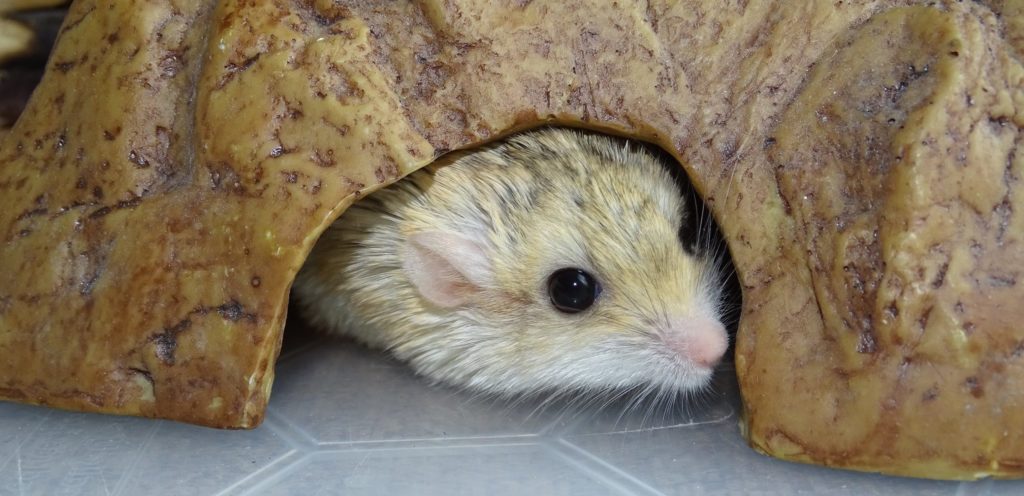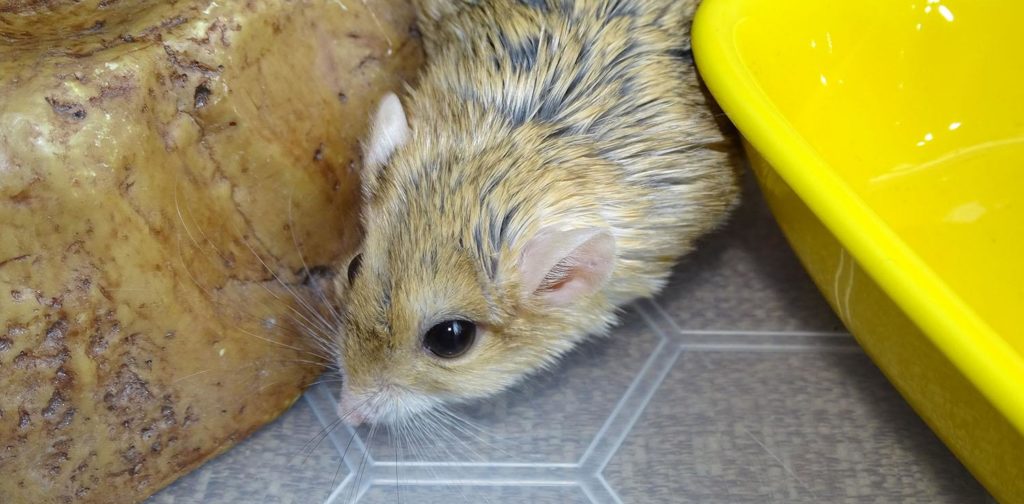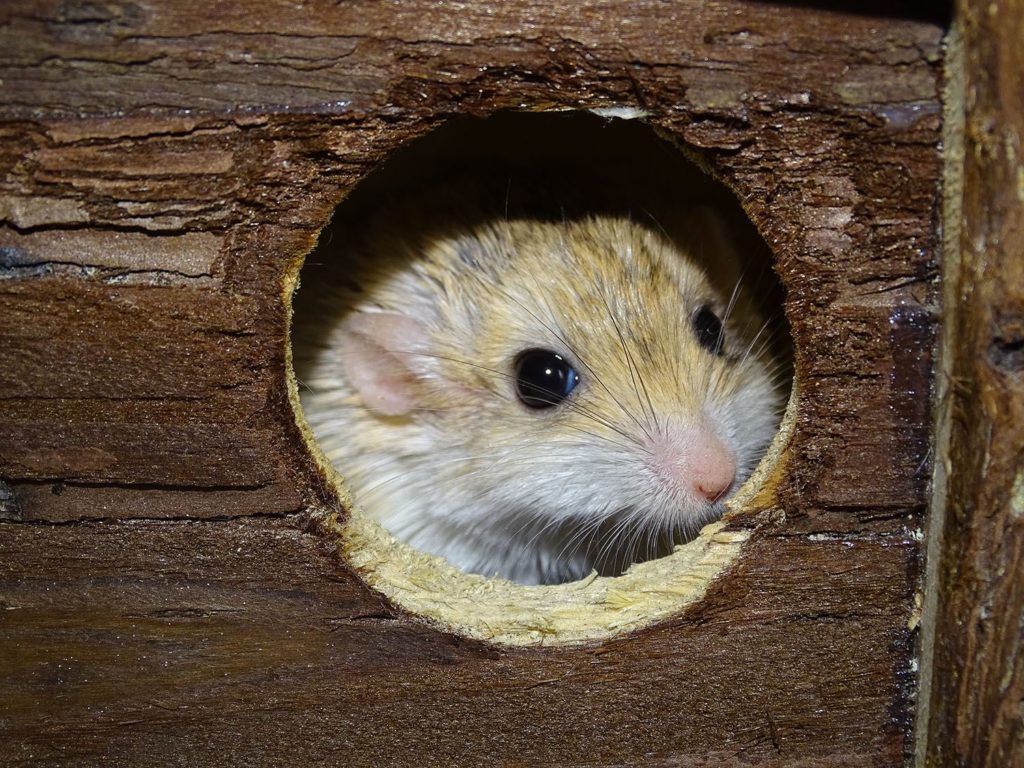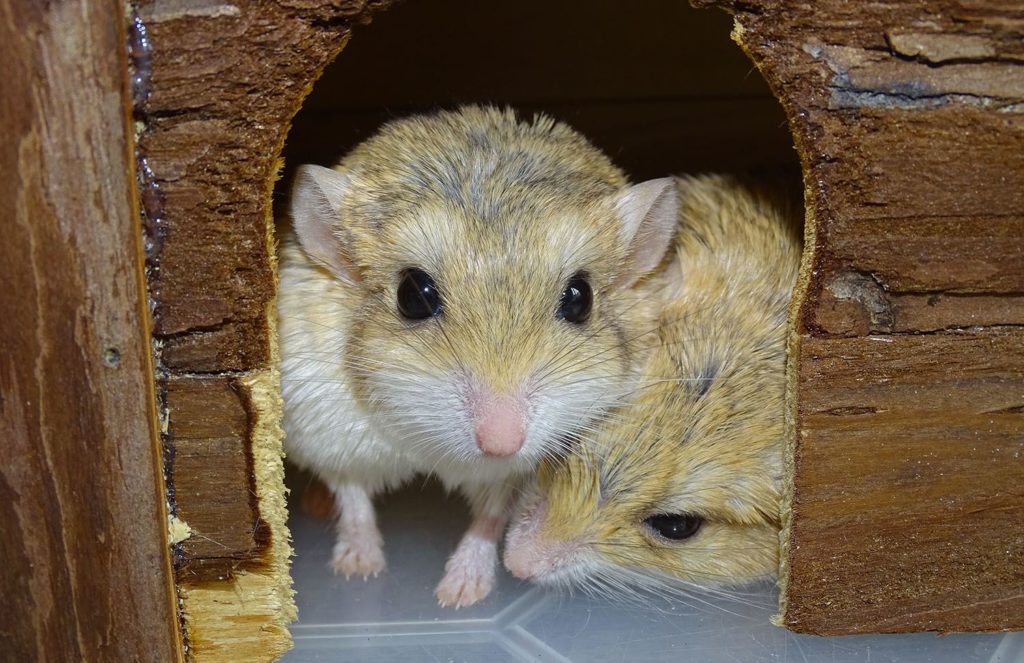This question is one that is coming up more and more as duprasi become more popular and accessible – and the answer is both.
Duprasi can live alone their entire lives – and many do.
But duprasi can also live in same-sex pairs in the right set up and many do.
As with normal gerbils (Mongolians) there is a chance that a pair could squabble at some point – they are far more open to environmental changes to resolve it – whereas Mongolians are usually all or nothing on that front.
If duprasi start to squabble – the first signs you often see are a damaged tail and lots of squeaking. They often stand up in their little bear pose and slap each other’s faces too. You can’t miss these signs thankfully – and so you can make changes immediately.
What Can Cause Duprasi To Fight With Each Other?
Size is everything with these – they don’t always like to share you see.
If you have too small an enclosure that doesn’t allow for multiple sleeping dens and at least 1 20cm+ wheel – then they are more likely to get narky with each other as they have nowhere to get some peace and quiet – and doops love to sleep (we all know that).
Doops love to be behind and under things – so if you have their houses and nests pushed right to the edges – you are reducing the space they have to move about. Always have things a doop-width inside of the edge.
Also, if you don’t have enough under-cover areas they explore less – they love to be hidden and they actively move from under something to under something or behind something else. It becomes like ‘their preferred route’.
If there aren’t enough of these ‘routes’ duprasi can end up exploring less. Just like we are the opposite – and a shop at the end of a very long dark tunnel wouldn’t be somewhere a lot of humans wanted to go if they didn’t need to!

What Size Enclosure Is Best For a Pair Of Duprasi?
For a single duprasi – I would say as big as you could possibly fit in your allocated area. Ikea Detolfs, 5ft Vivexotic vivariums, a Skyline Marrakesh, or converted fish tank – all perfect.
However, it is currently thought that pairs of fat-tailed doops living together do better in an enclosure on the smaller side – as it limits their opportunity to form a protected territory within that one enclosure you keep them in.
Saying this though – this is what is also thought for Mongolians – but hasn’t ever been outright confirmed. So we would love to have more people report on what sized enclosures they had tried with a pair of duprasi so we can get some definite answers.
I mean if we found out what the best-sized enclosure was – this could be the key to them not fighting – then we could have pairs being a lot happier and reduce virtually all fighting? How awesome would that be!
However, just from a starting point – it appears an enclosure that is a maximum of 2ft long, 1ft deep and 2ft high (or smaller) is a size that has successfully housed a pair of same-sex duprasi for their entire lives.
Although online, there are more examples of incomplete pairings – where the doop pairs are currently together but are both still alive so the result isn’t clear yet. There are also a few in much larger settings, but a few of these have already been split up because of squabbling.
So the best cages, tanks or enclosures for duprasi pairs is yet to be confirmed.
We need more stats on this – so comments needed below of your own multiple doop set ups.

Do You Have To Split Duprasi Up If They Are Fighting?
Not at first – unless you see some serious injuries – in which case Yes – always take out the injured one into a hospital cage at first and assess the situation.
However, if neither is seriously or visibly injured – usually one or more of the following things can help calm them down over the next few days together:
- Add in another nest area (even if one of the existing nests is uninhabited).
- Change the wheel for a clean one – or add a second wheel
- Add a fresh dust or sand bath to the enclosure
- Scatter feed plenty of treats or tastier foods around the place
- Add more nesting material in a heap out the way and/or up the substrate level
- And if they are always fighting over one nest or tube etc – take it out completely.
Also, if they are still squabbling a bit and are in a large enclosure with sections connected together with tubes, ramps or doorways, remove these temporarily as they could be pinch-points upping the stress. Imagine having to walk down a corridor where people you think don’t like you are watching!
All the tweaks above should add a distraction into the enclosure – allowing your doops to focus on other things and potentially create a snug new or second nest somewhere fresh – relieving the stress.

If the fighting between your doops continues after making all these changes – then perhaps they need to be apart for longer instead of just a few days.
Will Duprasi Gerbils Attack And Kill Each Other?
If you miss all the warning signs, and/or the duprasi are just really not settling down then you would need to split them up for sure.
Gerbils in general, tend to give plenty of warning that they aren’t getting on with each other and that the ‘weakest’ gerbil needs to leave. However if they are trapped in the same enclosure – of course they can’t leave.
And sometimes the more dominant gerbil will have to make a stand – and the weaker of the two can get seriously injured. We don’t have much info on duprasi specifically in the same situation though – but there have been reported squabbles and tail injuries in same-sex pairs kept together – and a lot of noise.
Reports of gerbils or doops ‘killing’ their tankmate are often not substantiated – the death is often not proved to be related to a declan.
What Causes Gerbils To Fight Each Other?
Declanning gerbils can really seriously injure each other though – and there are many reports of a gerbil not recovering after one – but they themselves rarely escalate to killing.
Often – the reason FOR an initial declan is that the one who is getting beaten up is ill in the first place – and the injuries sustained can just hasten that process up.
Also gerbils, found dead that have been part eaten, often died naturally and the other gerbil was confused about it – or was ‘tidying up’. This stands to reason as usually these examples are where the unfortunate gerbil was found in their nest – passing in their sleep.
As for doops – there have been no known confirmed cases of doops killing each other in a fight.
Those that we have seen are where a doop in a pair died relatively young and had injuries when the owner found them – but the reason for these injuries (usually on the body not the tail) was always unknown.
There is so much more we can learn about our duprasi by caring for and watching them closely.
And sharing – always sharing.
